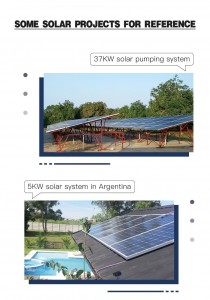At present, crystalline silicon materials (including polycrystalline silicon and monocrystalline silicon) are the most important photovoltaic materials, with a market share of more than 90%, and will still be the mainstream material for solar cells for a long period of time in the future.
The production technology of polysilicon materials has been in the hands of 10 factories of 7 companies in 3 countries including the United States, Japan and Germany for a long time, forming a situation of technology blockade and market monopoly.
The demand for polysilicon mainly comes from semiconductors and solar cells. According to different purity requirements, it is divided into electronic grade and solar grade. Among them, electronic-grade polysilicon accounts for about 55%, and solar-grade polysilicon accounts for 45%.
With the rapid development of the photovoltaic industry, the growth rate of polysilicon demand for solar cells is higher than that of semiconductor polysilicon. It is expected that the demand for solar polysilicon will exceed that of electronic grade polysilicon by 2008.
In 1994, the total output of solar cells in the world was only 69MW, but in 2004 it was close to 1200MW, an increase of 17 times in just 10 years. Experts predict that the solar photovoltaic industry will surpass nuclear power to become one of the most important basic energy sources in the first half of the 21st century.
Solar panel composition and functions of each part:
(1) Tempered glass: Its function is to protect the main body of power generation (such as batteries), and there are requirements for its selection of light transmission:
1. The light transmittance must be high (generally above 91%); 2. Ultra-white tempered treatment.
(2) EVA: It is used to bond and fix toughened glass and power generation main body (cell). The quality of transparent EVA material directly affects the life of the component. EVA exposed to the air is prone to aging and yellowing, which affects the light transmission of the component. In addition to the quality of EVA itself, the lamination process of the module manufacturer is also very influential. For example, if the degree of EVA bonding is not up to the standard, the bonding strength between EVA and tempered glass and the backplane is not enough, which will cause EVA Early aging affects component life.
(3) Cells: The main function is to generate electricity. The mainstream of the power generation market is crystalline silicon solar cells and thin-film solar cells, both of which have their own advantages and disadvantages.
Crystalline silicon solar cells have relatively low equipment costs, but high consumption and battery costs, but also high photoelectric conversion efficiency, so it is more suitable to generate electricity under outdoor sunlight.
Thin-film solar cells have relatively high equipment costs, but low consumption and battery costs, but the photoelectric conversion efficiency is more than half that of crystalline silicon cells, but the weak light effect is very good, and it can also generate electricity under ordinary lights, such as calculators on solar cells.
(4) Backplane: function, sealing, insulation, waterproof. Generally, materials such as TPT and TPE must be resistant to aging. Most component manufacturers have a 25-year warranty. Tempered glass and aluminum alloy are generally no problem. The key is whether the backplane and silica gel can meet the requirements.
(5) Aluminum alloy: protect the laminate, and play a certain role in sealing and supporting.
(6) Junction box: protect the entire power generation system and act as a current transfer station. If the component is short-circuited, the junction box will automatically disconnect the short-circuited battery string to prevent burning out of the entire system. The most critical thing in the junction box is the selection of diodes. Different types of battery slices have different corresponding diodes.
(7) Silicone: for sealing, used to seal components and aluminum alloy frames, components and junction boxes. And the cost is very low.
Post time: Apr-21-2023
